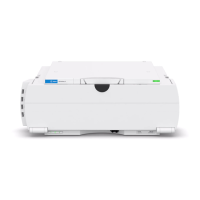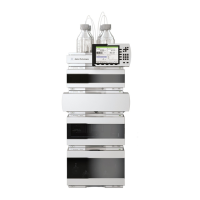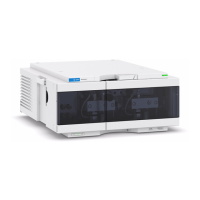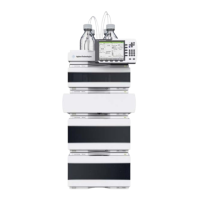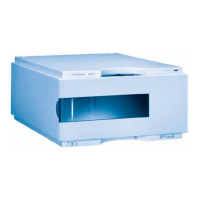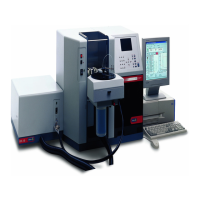48 Purification Solution - Developer's Guide
6
Calibration Procedures
Characterizing the delay volumes: Mixing point to UV detector and Column to UV detector
Characterizing the delay volumes: Mixing point to UV detector
and Column to UV detector
Chemicals (needed only if values are measured; all solvents degassed)
• Preparative or combined system (measurement recommended):
• Solvent A: Water
• Solvent B: 1% acetone in water as a UV tracer
• Solvents can contain additives.
The Mixing point to UV detector tubing volume is used to correct the HPLC
elution times for the dead volumes of the tubing and a mixer. The Column to
UV detector tubing volume is the dead volume of the tubing between the end of
the column and the UV cell. The difference between these tubing volumes is
called the dwell volume, which serves as a correction of the gradient-related
calculations for the delay of the gradient to the column. It causes a delay of the
programmed gradient to the column, and it negatively influences the
performance of gradient-based separations. Therefore, it is an important
parameter for the calculation and optimization of generic and focused
gradients.
Tubing Volumes for Predefined Systems
The Volume column to UV detector and Volume mixing point to UV detector tubing
volumes for predefined systems can be selected for each analytical and
preparative system from the Tubing drop-down list in the in the Delay Volumes
tab of the Analytical Systems or Preparative Systems dialog box. Predefined
systems are several default supported configurations defined in the
M8368-90302 System User Guide for the 1260 Infinity Purification System,
which have modules connected using the following capillary kits:
• For the Combined UV/MSD and Preparative UV/MSD systems: 5067-6176
Capillary Kit for Mass-based Systems
• For the Preparative UV-only system: 5067-6175 Capillary Kit for UV-based
Systems
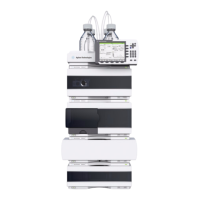
